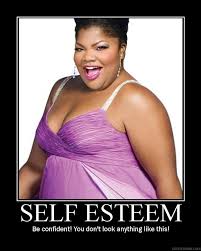Sunday, February 24, 2013
From Knowledgable to Knowledge-able: Learning in New media Environments
Quotes
From Knowledgable to Knowledge-able:
Learning in New media Environments
By Michael Wesch
This is a
very good article on a timely issue. I like to cite some quotations from the
article which underlie the arguments of the author.
“This new media environment can be
enormously disruptive to our current teaching methods and philosophies. As we
increasingly move toward an environment of instant and infinite information, it
becomes less important for students to know, memorize, or recall information, and
more important for them to be able to find, sort, analyze, share, discuss,
critique, and crate information.”
“To understand the true potentials of this
‘information revolution’ on higher education, we need to look at beyond the
framework of information. For at the base of this ‘information revolution’ are
new ways of relating to one another, new forms of discourse, new ways of
interacting, new kinds of groups, and new ways of sharing, trading, and
collaborating.”
It seems to
me that the statement of “information
revolution” is rightly used what is going on in the digital media today. It
is a revolution changing almost everything in our life.
“This is a social revolution,
not a technological one, and its most revolutionary aspect may be the ways in
which it empowers us to rethink education and the teacher-student relationship
in an almost limitless variety of ways.”
Sunday, February 17, 2013
the question
should we have more schools teaching about sex and what it is and how to use birth control for middle and high school age or should we have schools teach abstinence
Introduction: Are Teenagers Necessary? And The Teenage Mystique
Introduction: Are
Teenagers Necessary?
And
The Teenage Mystique
By Thomas Hine
I like to cite three quotes from
readings “Introduction: Are Teenagers Necessary?” and “The Teenage Mystique.”
“Anne
Freud theorized that the experience of adolescence is so filled with pain,
trauma, and turmoil that our conscious minds suppress it. There is a serious
problem with this theory, though. Survey after survey of young people show that
they are not miserable at all. They have problems, of course, but they feel
confident about coping with them” (p. 2).
I agree with Thomas Hine that Anne
Freud’s theory is problematic. My personal experience and observations do not
fit this theory. Adolescents or teenagers are not filled with pain, trauma and
turmoil. They experience problems but adults experience problems, too.
Teenagers should not be characterized with those words.
“Our
beliefs about teenagers are deeply contradictory. They should be free to become
themselves. They need many years of training and study. They know more about
the future than adults do. They know hardly anything at all. They ought to know
the value of a dollar. They should be protected from the world of work. They
are frail, vulnerable creatures. They are children. They are sex fiends. They
are the death of culture. They are the hope of us all” (p. 11).
I used to hear these kinds of
statements about teenagers, but I am surprised when I see all of them together.
If adults or society are so confused about who teenagers are how they can
developed solutions for the problems of teenagers? I think one of the reasons
of this confusion is that teenagers are not a homogeneous group. There are many
kinds of teenagers. From thirteen to fifteen, there are big differences among
them.
This is really an unacceptable
crime. The mom was cruel. It is hard to understand what kind of a personality
she had. Her behaviors must be condemned. However, it is also hard how this
event can be used to characterize a very large group of people called
teenagers. Obviously, a teenager did something very wrong. There are also many adults
doing things worse that what she did. Should we use to characterize adults by
using the crimes committed by some adults. I think this is unfair.
Saturday, February 16, 2013
Monday, February 11, 2013
A Tangle of Discourses: Girls Negotiating Adolescence
A
Tangle of Discourses: Girls Negotiating Adolescence
By
Rebecca C. Raby
“Parents brace themselves for the
challenges that are assumed to come when their
children enter their teenage years, and
many parents turn to advice columns,
books, talk shows and therapists for
guidance.
In an interesting shift from this
standard discourse of adolescence, Laurence
Steinberg’s research suggests that the
teen years are ‘stormier’ for parents than
for teenagers (p. 431).
The statements
above make a lot of sense to me. I think that the metaphor “storm” explains a
dimension of teenage hood. Yes teenage years are story years for youth. However,
it seems to me that it is more stormy for parents than it is for adolescents. Many
parents assume that their adolescent children will do something wrong. This
assumption is in the culture of adults. Parents are mostly over concerned about
their teenage children. This concern directs them to discipline and control the
behaviors of their children. In turn, their over protective behaviors irritate
teenagers and make them rebellious. 
“Youth today are courted as a
high-consumer group, and are modeled in the media as the ideal age, with teenage
hood constituting the onset of ‘the best years of your life’. Social historians
often connect the emergence of adolescence to processes of production and
patterns of consumption (Kett, 1977; Adams, 1997). (…) Today, youth not only
advise their families on how to spend money, but are identified as a group with
both free time and disposable income (Palladino,1996)” (p. 437).
The discourse of
adolescence as “Pleasurable Consumption” and considering the role of media in
the construction of this discourse is also meaningful. Today teenagers as a
group are seen as profitable consumers. It is very obvious. When we go to mall
or similar shopping places we see that most of the shoppers are teenagers. It
is also seen in all TV and magazines advertisements. Teenagers are shopping in all
places. In addition they advise their parents what to buy. In this context, an
important point is that they are heavily influenced by the fashion industry and
media. Whatever is commonly advertised in media, it becomes trendy and it is
bought by teenagers. 
“The present paper has examined key
dominant discourses that frame adolescence, the investments behind these
discourses and some of the contradictions embedded within and between them. (…)
Clearly this discussion is simply a beginning, as these discursive patterns
intersect with, and are disrupted by, class, race, gender and sexuality.(…) Discourses
are not monolithic and unchanging; quite the contrary. Their study allows us to
de-naturalize taken-for-granted assumptions (p. 446).
The five
discourses of adolescents identified by the author are not clear cut
categories. Also they are not universal. They are affected by race, culture, social
class, gender and other similar factors. They cannot be seen as unchanging.
Specifically, social class and culture, like media, influence teenage
behaviors.
Sunday, February 3, 2013
questions/comments
My question is what do we have to do to teach teenagers and young girls about self-esteem and the media in TV shows and also in movies?
Unlearning the Myths That Bind Us
Elif Ozcan
Unlearning the Myths That Bind Us
This author Linda Clmstenscn argues that TV shows for children
are bad to watch. They are sexist and racist movies and cartoons that children watch
as well as adults. The article talks about how little girls see the fairy tales
such as Cinderella, and cartoons like Mulan and Aladdin as nice stories. They
are influenced by these kinds of productions and begin waiting for a charming prince
to come and take them to happy places. Also it teaches young girls and
teenagers that African American people are fat and lower class. They also teach children not to do anything
with lower class and racially and culturally diverse people. The article also
said that all these girls learn that being pretty, and having a nice and rich
husband is what they need. These movies and cartoons teach children at an early
age that this is what the world is. Also there are other movies like the three
movies that the article talks which show in wrong ways how non-white and poor
people live in their culture. Another issue is that these kinds of movies and
cartoons teach that our step sisters and brothers are evil. If your mom or dad marries to someone and if they
have children then they will be evil. It
teaches our children that this really is what happens. Also they show how step mothers
and fathers are horrible. How they make their husband’s daughter clean the
house, and make dinner. It doesn't show that in real life step parents and
families are not like this. I think there is need for movies showing the positive
side s of blended families; movies showing that any parent can be loving and
caring. Also there should be a fairy tale with gay parents. In all movies good parents
are all strait people. It would show
children that having a different family is great. Also being a different race such
as African American or being from a different country such as Egypt or China
should not be seen as a disadvantage. I know it is getting better but we have
to still show how different cultures and races are also great to be with. 

Subscribe to:
Posts (Atom)

